
The Most Influential Sci-Fi Books of All Time
What do we talk about when we talk about science fiction? Is it our hope for the future, or our fear of creating the very thing that will destroy us? If the most influential sci-fi books of all time are any indication, the answer is both.
Since the early 19th century, humanity has been fascinated by its own ability to move goalposts and demolish old boundaries in the dogged pursuit of progress. Our interpretation of that progress frequently shifts between cautious optimism and resignation toward our own doom, due to various social and political climate changes. But even at our most pessimistic, when we collectively felt as if we’d lost some great cosmic game, never, not once, have we ever stopped writing and reading new futures for ourselves. That’s a testament, not only to the staying power of sci-fi, but also to the tenacity of the human race.
The most influential sci-fi books of all time have shaped not just science fiction and its myriad sub-genres, but horror, fantasy, and manga, as well. Filmmakers have drawn inspiration for the stories between their covers, and real-world STEM developments have been made in their names. Without these books, for better or worse, our world would not be what it is today.

The Most Influential Sci-Fi Books of All Time
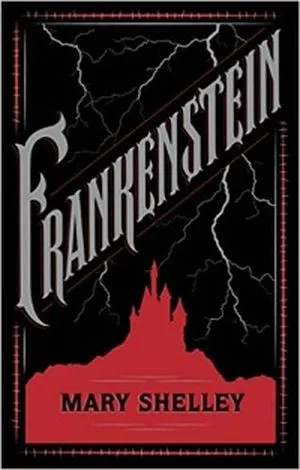
Frankenstein by Mary Shelley (1818)
Widely regarded as the grandmother of all sci-fi novels, Mary Shelley’s Frankenstein not only laid the foundation for science fiction as an exploration of what happens when Man plays God, but also asked the timeless question: what is it that makes us human?
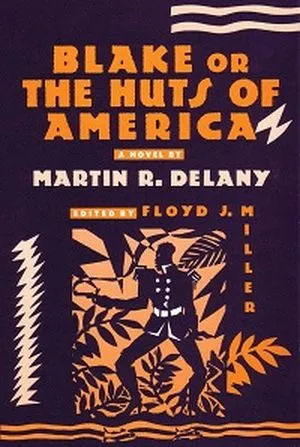
Blake, or the Huts of America by Martin R. Delany (1859-1862)
Dhalgren author Samuel R. Delany — no relation — once called Blake, or the Huts of America “about as close to an sf-style alternate history novel as you can get.” Serialized in The Anglo-African Magazine between 1859 and 1862, Martin R. Delany’s novel imagines the after-effects of a widespread slave uprising in the Caribbean and the American South, led by a free-born enslaved man whose wife is sold away from him.

Twenty Thousand Leagues Under the Sea by Jules Verne (1869)
Jules Verne’s novels predicted many modern technologies, from solar-powered space flight to Zoom, but Captain Nemo’s Nautilus is a particular stand-out. The electric submarine Verne imagined in Twenty Thousand Leagues Under the Sea predated the real-life Peral by nearly 20 years. More than that, however, Verne’s three best-known novels — this, Around the World in Eighty Days, and Journey to the Center of the Earth — built the framework for sci-fi adventure fiction.

The Strange Case of Dr. Jekyll and Mr. Hyde by Robert Louis Stevenson (1886)
Victor Frankenstein might be the first hubristic scientist in literary history, but the trials and tribulations of Robert Louis Stevenson’s well-meaning Dr. Jekyll would be rehashed for years to come as the archetypal “mad scientist.” Since its publication in 1886, Jekyll’s fight with Mr. Hyde has inspired parody and pastiche alike, from The Incredible Hulk to The Nutty Professor to Family Matters.
Related: The Top Sci-Fi Books
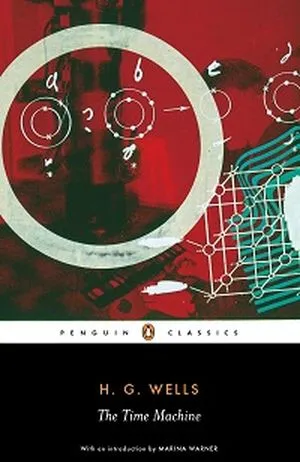
The Time Machine by H.G. Wells (1895)
Time travel. Human evolution. Post-apocalyptic visions of Earth. Cli-fi (climate fiction). H.G. Wells’s The Time Machine has all of these sci-fi staples and more. Here, the unnamed Time Traveller goes some 800 millennia or so into the future to find that human evolution has divided along class lines. He then goes eons further, and although Wells’s imagining of a post-apocalyptic landscape may differ from those we see today, his speculations on the effects of industrialization can be read as proto-climate fiction.
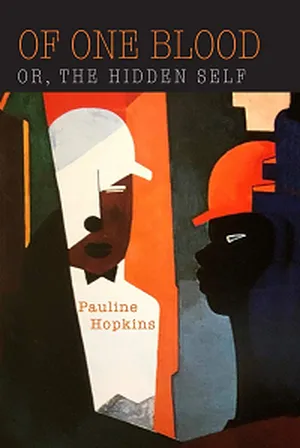
Of One Blood, or The Hidden Self by Pauline Hopkins (1902-1903)
Pauline Hopkins’s Of One Blood follows Reuel, a Harvard-educated mixed-race man who passes for white, who uncovers mind-blowing truths about Africa’s history — and its present — when he stumbles upon a technologically advanced underground civilization beneath an archeological dig site in Ethiopia. Fans of Black Panther and Nnedi Okorafor’s Africanfuturist novels will recognize much here.
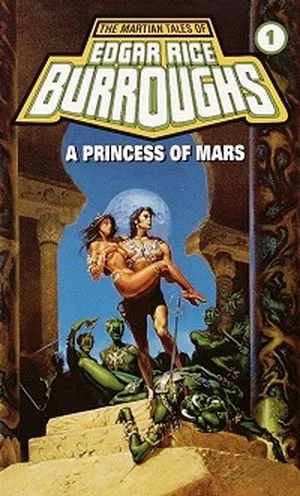
A Princess of Mars by Edgar Rice Burroughs (1912)
Whether you love ’em or hate ’em, pulpy adventures have had a strong presence in the sci-fi world for more than a century. Tarzan creator Edgar Rice Burroughs also penned this novel, the first of many 11 books about his fictional “Uncle Jack,” AKA John Carter of Mars. Although the novel’s depictions of women and people of color leave a lot to be desired — Carter is a Civil War veteran who fought for the Confederacy and, well, just look at that cover — A Princess of Mars and the works that followed it set the standard for pulp sci-fi for decades to come.

We by Yevgeny Zamyatin (1924)
Yevgeny Zamyatin’s We appeared in print in English 30 years before the original Russian version was published. One of the first dystopian novels, We introduces readers to the One State: a unified world government that demands conformity of its citizens, who live and work in glass buildings, and have numbers instead of names. Zamyatin’s vision of a terrible future inspired a number of writers who appear on this list, including George Orwell, Kurt Vonnegut, and — possibly — Aldous Huxley.
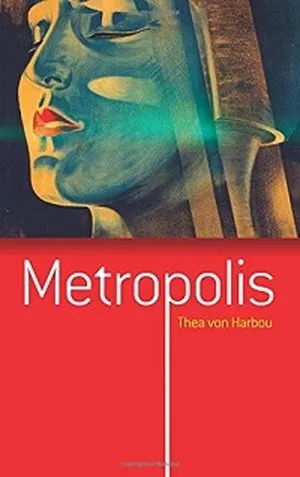
Metropolis by Thea von Harbou (1925)
Existential dread over automation might have begun with the Luddites in the early 19th century, but Thea von Harbou dragged their fears into the modern age with her 1925 novel. Like Wells’s Time Machine, Metropolis envisions a future in which the lower classes labor tirelessly underground so that the rich can live in the lap of luxury above. Von Harbou’s novel created a domino effect of interpretations in other media, inspiring the 1927 film — directed by the author’s husband, Fritz Lang — that inspired Osamu Tezuka’s 1949 manga, which in turn led to a 2001 anime film — all of the same name.
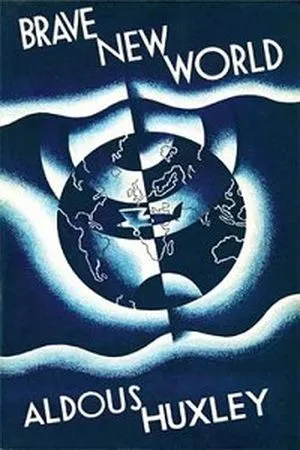
Brave New World by Aldous Huxley (1932)
Aldous Huxley’s best-known novel takes place in a far-future version of London, one marked by free love, mandatory drug consumption, and the total destruction of the nuclear family. In the midst of all this is John, the “natural-born” — read: gestated and birthed by a human being — son of an ostracized World State citizen, who is transported to London after spending his entire life on a “Savage Reservation,” but finds the so-called comforts of his new home unbearable.
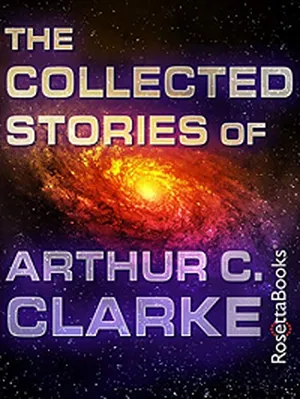
The Collected Stories of Arthur C. Clarke by Arthur C. Clarke (1937-1999)
It’s hard to imagine any writer working to reconcile religion and science with more intent than Arthur C. Clarke. In stories like “The Star,” “siseneG,” and “The Nine Billion Names of God,” Clarke wrestles with the nebulous concept of a higher power in a technologically advanced age. It’s impossible to pick just one of his short stories, or even one of his novels, to feature here, so allow me the opportunity to recommend more than 60 years of his short fiction collected in one volume.
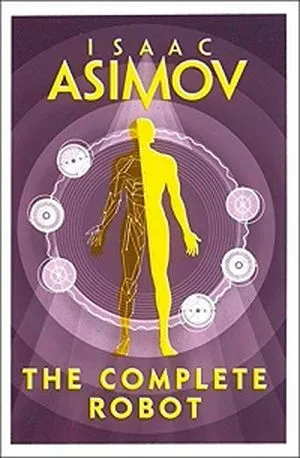
The Complete Robot by Isaac Asimov (1939-1977)
It’s hard to pick just one of Isaac Asimov’s books to include on this list, but the ubiquitousness of his Three Laws gives The Complete Robot a positronic leg up on its competition. The Three Laws of Robotics govern most synthetic life forms in Isaac Asimov’s short stories and have been widely adopted by sci-fi writers looking to set parameters for their AIs — or subvert them. Published in 1982, The Complete Robot collects 31 of Asimov’s short stories about automatons, in all shapes and sizes.
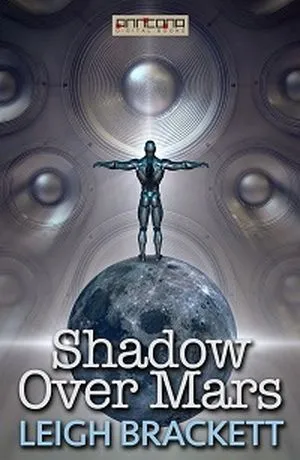
Shadow Over Mars by Leigh Brackett (1944)
Also published as The Nemesis from Terra, this debut novel from the “Queen of the Space Opera” follows Rick Urquhart: an impoverished, ne’erdowell drifter who just so happens to be the prophesied savior fated to rule over all of Mars. An über-tough guy who plays by his own rules, Rick will have to face off against Martian royalty and corporate interests alike in order to realize his destiny. Shadow over Mars is pulpy, it’s prototypical, and it’s largely overlooked.
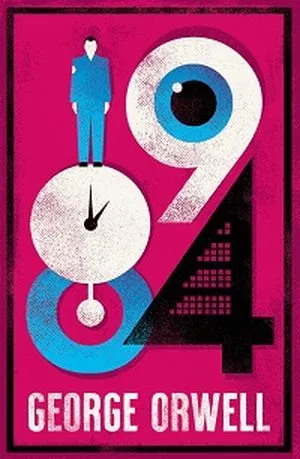
Nineteen Eighty-Four by George Orwell (1949)
This one is so influential that everyone knows it, even if they haven’t read it. George Orwell’s seminal dystopian novel introduced plenty of new words and phrases into the English lexicon — including Big Brother, doublethink, newspeak, and thoughtcrime — and may have predicted the rise of smartphone data collection. Although We predates Orwell’s novel by a quarter century, Nineteen Eighty-Four created a blueprint for dystopian fiction that’s still in use today.
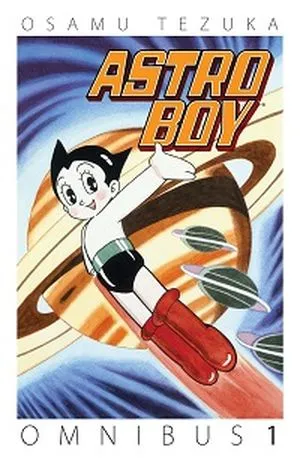
Astro Boy by Osamu Tezuka (1952-1968)
Astro Boy may not have been the first work of literature to introduce robots with feelings, but it’s one of the most influential by far. Not only did the long-running series help set the standard for manga in postwar Japan, but its anime adaptation was “the first commercial animated TV program in Japan,” according to Tezuka’s official website. If you’re a sci-fi reader who grew up loving anime, you owe it all to Astro Boy.
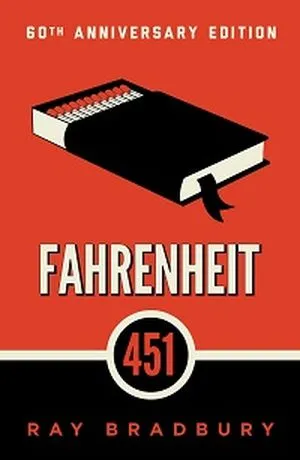
Fahrenheit 451 by Ray Bradbury (1953)
“It was a pleasure to burn.” It’s one of the best-known first lines in literature, and it comes from a novel that’s on par with Nineteen Eighty-Four, at least as far as being misinterpreted goes. Ray Bradbury confirmed to L.A. Weekly in 2007 that Fahrenheit 451 is about the fear that television would one day crowd out books, not government censorship or McCarthyism. I think most of us would agree that Roland Barthes’s theories on the death of the author applies here, however. Even if you agree with Bradbury, Fahrenheit 451‘s influence stems from its interpretation as a piece of anti-censorship literature, not a warning against the evils of television.
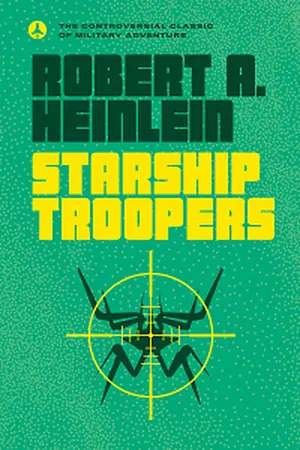
Starship Troopers by Robert A. Heinlein (1959)
Space wars and buglike aliens still abound in sci-fi today, thanks in large part to Robert A. Heinlein’s Starship Troopers. If you’ve only seen the 1997 movie adaptation starring Casper Van Dien, you may come away from this novel disappointed. The tongue-in-cheek humor isn’t part of the original text; where the movie satirizes the fascist society its human characters are dying to defend, Heinlein’s novel plays it straight, and often seems to advocate for practices — total war, capital punishment, etc. — many may find distasteful. Although Starship Troopers isn’t a novel suited to everyone’s taste, there’s no denying its impact on the military sci-fi sub-genre.
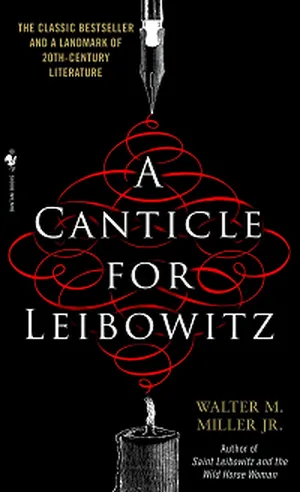
A Canticle for Leibowitz by Walter M. Miller Jr. (1959)
Let’s talk apocalypse and what comes after. You can’t throw a rock without hitting a post-apocalyptic story these days. In fact, they’ve been a genre staple since Mary Shelley published her plague novel, The Last Man, in 1826. It should come as no surprise, then, that Walter M. Miller’s only novel, the post-apocalyptic A Canticle for Leibowitz, is a Hugo Award winner that has never gone out of print. One of the first sci-fi novels to have crossover appeal, Canticle examines the impact of nuclear war on a broken-down secular society and the Catholic monastery trying to minister to it.
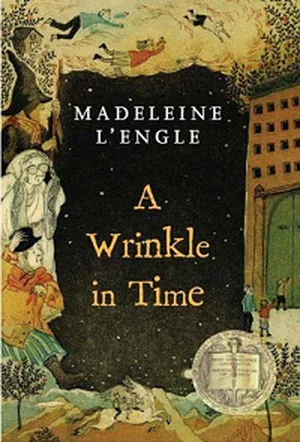
A Wrinkle in Time by Madeleine L’Engle (1962)
If science fiction has a gateway drug, A Wrinkle in Time is it. Writing for Early Bird Books, Molly Reiniger points out that Madeleine L’Engle’s novel for children “created the space, especially for girls, to be interested in science fiction and fantasy, and to go on to be dedicated readers and writers of the genre.” The novel follows a group of child heroes and their fairy godmother-esque guides as they travel from dimension to dimension, à la Jonathan Swift’s Gulliver or Wells’s Time Traveller. If you’re a lifelong sci-fi fan or a woman working in a STEM field, there’s a chance it’s because of L’Engle.
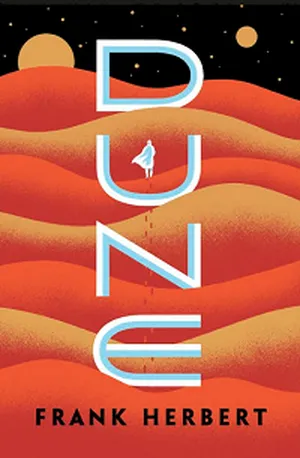
Dune by Frank Herbert (1965)
It’s impossible to talk about the most influential sci-fi books of all time without talking about Dune. In his 1965 bestseller, Frank Herbert rolls court intrigue, witchcraft, climate change, the clash of civilizations, and elements of military sci-fi into a Chosen One narrative about a teenage Messiah. Dune inspired Star Wars and Hayao Miyazaki’s Nausicäa of the Valley of the Wind. Its 1992 video game adaptation, Dune II: The Building of a Dynasty, “is widely regarded as the first modern real-time strategy (RTS) game,” according to Vintage Games co-authors Bill Loguidice and Matt Barton.

Babel-17 by Samuel R. Delany (1966)
Although it’s not Delany’s best-known work — that honor belongs to 1975’s Dhalgren — Babel-17 was highly influential upon its release for its use of, and play with, language. This is one of the first, if not the first, sci-fi explorations of the Sapir-Whorf hypothesis in action. The story here centers on a former military cryptographer tasked with deciphering the titular code, used by enemy forces ahead of attack maneuvers. As it turns out, Babel-17 is no code, but a language, and Delany’s heroine dives deep to learn as much as she can about how it functions.
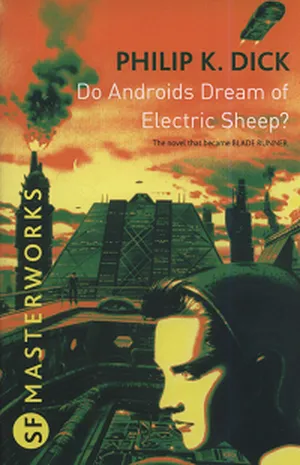
Do Androids Dream of Electric Sheep? by Philip K. Dick (1968)
A century and a half after Mary Shelley cracked open the question of what makes us human, Philip K. Dick dumped that can of worms out onto the page to create what remains one of the most influential sci-fi novels ever written. The basis for Ridley Scott’s Blade Runner, Do Androids Dream of Electric Sheep? centers on a blue-collar assassin tasked with hunting down humanoid robots who have escaped servitude on Mars for a chance at freedom on Earth.
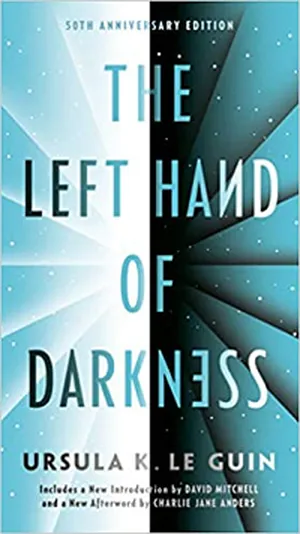
The Left Hand of Darkness by Ursula K. Le Guin (1969)
I would hope that, by this point in this list, I’ve put any arguments about the “sudden” politicization of science fiction to rest. If you’re still unconvinced, check out Ursula K. Le Guin’s The Left Hand of Darkness, which follows humanity’s emissary to an intergalactic council — a council with which the people of Terra wish to unite — as he navigates life among an alien race whose members are expected to live as male, female, and agender over the course of their lives. The first novel in Le Guin’s Hainish Cycle, The Left Hand of Darkness forced open the door for future science fiction writers to critique gender in their work.
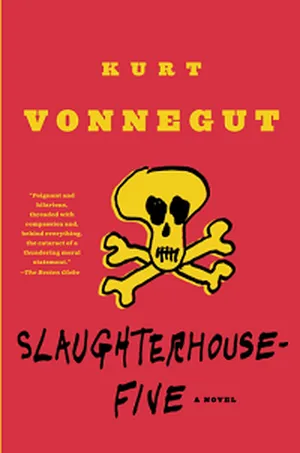
Slaughterhouse-Five by Kurt Vonnegut (1969)
Another sci-fi novel with broad crossover appeal, Slaughterhouse-Five stands out for its depiction of post-traumatic stress disorder as time travel. In the novel, World War II veteran Billy Pilgrim becomes “unstuck in time,” to the extent that flipping a light switch can transport him to another planet or send him back to the firebombing of Dresden. Possibly Kurt Vonnegut’s most famous novel, Slaughterhouse-Five offers up a thoughtful examination of the fallout of war in a not-quite-military sci-fi novel.
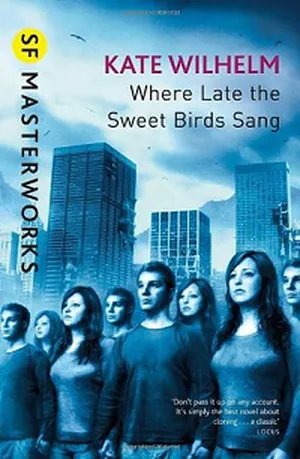
Where Late the Sweet Birds Sang by Kate Wilhelm (1976)
Kate Wilhelm’s Where Late the Sweet Birds Sang imagines a post-apocalyptic future in which humanity has attempted to circumvent rampant infertility through a dedicated cloning program. The novel made Wilhelm the second woman ever to win the Hugo Award for Best Novel — following Ursula K. Le Guin, who won for both The Left Hand of Darkness and The Dispossessed — but its influence may pale in comparison to that of the author, who co-founded the Clarion Workshop.
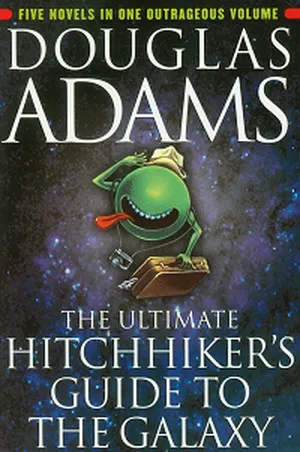
The Ultimate Hitchhiker’s Guide to the Galaxy by Douglas Adams (1979-1992)
Whether you’re cheeky enough to call a five-book series — six, if you count Eoin Colfer’s And Another Thing… — a “trilogy,” base an entire series around the adventures of one bumbling Englishman who stumbles unawares into being the last living Earth-man, or make the Earth’s destroyers into aliens who write poetry so bad it literally hurts, nobody does sci-fi comedy quite like Douglas Adams. The Hitchhiker’s Guide to the Galaxy trilogy has assisted in naming two separate species, two asteroids, and a NASA project, making it five — or six — of the most influential sci-fi books of all time…and that’s without mentioning the ubiquity of 42.
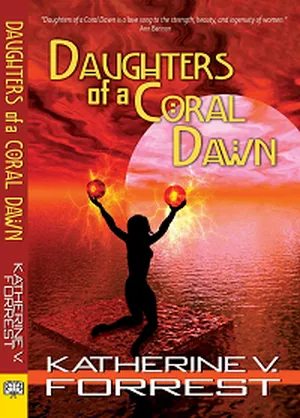
Daughters of a Coral Dawn by Katherine V. Forrest (1984)
It’s a story reminiscent of Laura Lam’s Goldilocks: a group of women set out from Earth to colonize a distant planet, away from patriarchal influence and persecution. After establishing her Eden, however, leader Megan finds herself conflicted when another, mixed-gender group of settlers — led by the devastatingly attractive Laurel — discovers her people and proposes an integration of their communities. An early work of lesbian sci-fi that gave way to a Lambda Literary Award–winning sequel, Daughters of a Coral Dawn is an oft-overlooked classic in the genre.
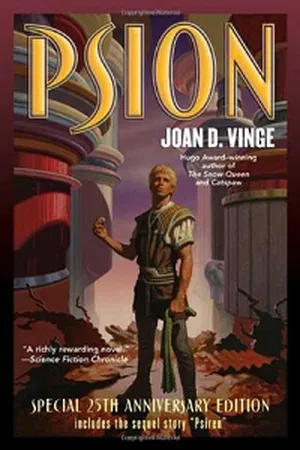
Psion by Joan D. Vinge (1982)
Two years before Neuromancer, there was Psion. Joan D. Vinge’s trilogy — Psion, Catspaw, and Dreamfall — centers on Cat, a teenage alien-human hybrid and street urchin who trains in a government program as a special investigator after his telepathic abilities are discovered upon his most recent arrest. Recognized by the American Library Association as one of the Best Books for Young Adults, this 1982 release has inspired generations of young sci-fi fans to delve deeper into the genre.
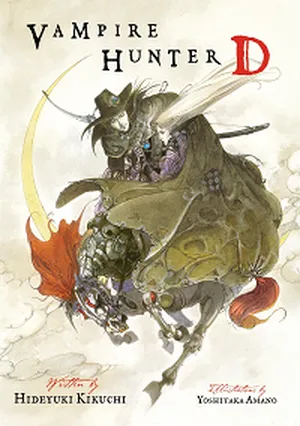
Vampire Hunter D by Hideyuki Kikuchi and Yoshitaka Amano (1983-Present)
From the bestselling author of Demon City Shinjuku and the famed illustrator of the first six Final Fantasy games comes Vampire Hunter D, the long-running light novel series about a half-vampire outcast who hunts down the Nobles — read: elite vampires — who once ruled his world. Having spawned 26 light novel sequels and counting, Vampire Hunter D offers up a thrilling, East-meets-Weird-West fusion that has inspired countless creatives since its 1983 debut.

Akira by Katsuhiro Otomo (1982-1990)
William Gibson may be the father of English cyberpunk literature, but Katsuhiro Otomo deserves the credit for birthing its Japanese cousin. The basis for the 1988 anime film of the same name, Akira centers on two teenage bikers whose lives in post–World War III Tokyo are upended when one of them develops psychic powers after being exposed to a government experiments.
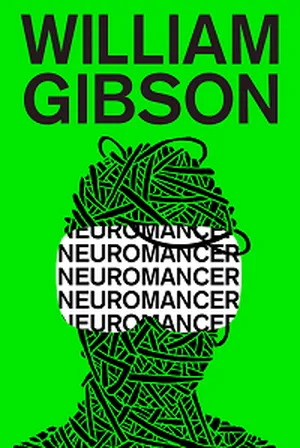
Neuromancer by William Gibson (1984)
How does a novel become synonymous with an entire sub-genre? Science fiction aficionados know that William Gibson’s 1984 novel embodies the very essence of cyberpunk. Influential enough to warrant its own Encyclopedia Britannica entry, Neuromancer established cyberpunk’s primary tropes and familiarized the sci-fi community with the concept of “cyberspace.”
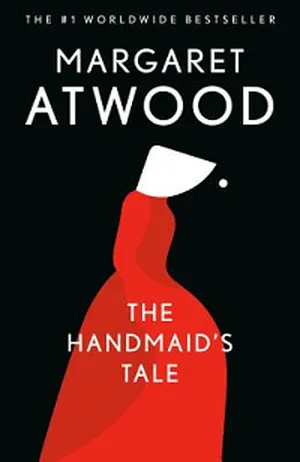
The Handmaid’s Tale by Margaret Atwood (1985)
Margaret Atwood’s dystopian bestseller continues to draw comparisons in contemporary politics, nearly 40 years after it first appeared on store shelves. And, much like Nineteen Eighty-Four, many of those comparisons ignore critical features — such as the white supremacy at the heart of Gilead — that make The Handmaid’s Tale such a grim reminder of how close the U.S. often comes to a hellish tipping point.

Watchmen by Alan Moore and Dave Gibbons (1986-1987)
If you’re a fan of Invincible, The Boys, or any other series that depicts superheroes as, well, not so super, you have Alan Moore and Dave Gibbons’s Watchmen to thank. This limited series questioned the moral superiority and valor of superheroes, presenting them as power-drunk titans, reluctant saviors, and questionable guardians of humanity — an angle that creators are still exploring today.
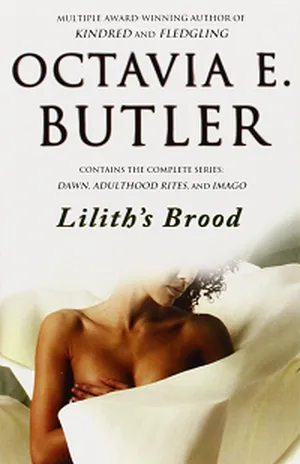
Lilith’s Brood by Octavia E. Butler (1987-1989)
Originally published in a single volume as Xenogenesis in 1989, Lilith’s Brood compiles three connected novels — Dawn, Adulthood Rites, and Imago — from Octavia E. Butler. The story here centers on what’s left of humanity, “rescued” from a nuclear-scarred Earth by the Oankali: a many-tentacled alien race who wish to breed with humans to introduce cancer to their species. It’s weird. It’s intense. And it’s kind of sexy, if tentacle sex and monster…erm…loving is your thing. I’m not saying that Lilith’s Brood was the start of the monster-loving trend, but I’m not not saying it, either.

Ghost in the Shell: Deluxe Complete Box Set by Masamune Shirow (1989-1997)
Another Japanese cyberpunk series, Masamune Shirow’s Ghost in the Shell has proven to be one of the most influential manga and anime franchises of all time. As The Guardian‘s Steve Rose pointed out back in 2009, no less than the Wachowski sisters, James Cameron, and Steven Spielberg have drawn inspiration from Shirow’s manga and its animated adaptations.
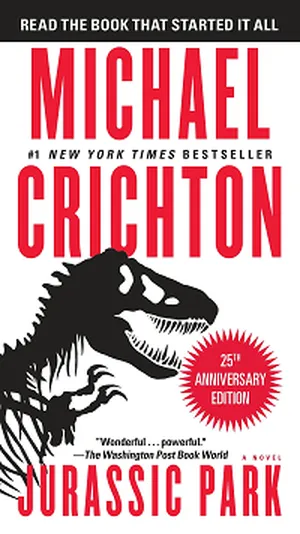
Jurassic Park by Michael Crichton (1990)
Speaking of Spielberg, 1993’s Jurassic Park brought millennials’ newfound love of dinosaurs — a love stoked, in part, by 1988’s The Land Before Time, which Spielberg produced — to more-grown-up audiences. We might never have gotten to see Dr. Grant and Ellie Sattler run for their lives on the big screen if it weren’t for this 1990 novel from sci-fi-thriller author Michael Crichton, however.
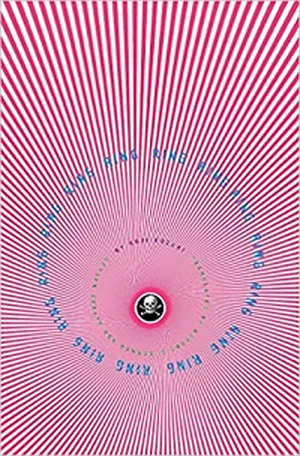
Ring by Koji Suzuki (1991)
J-horror fans owe a lot to Koji Suzuki’s Ring, which inspired several popular films made in the U.S., Japan, and South Korea, ushering in a new era of onryō-themed horror. Don’t let all this talk of chilling ghosts and blood-curdling frights fool you, though, because Ring is 100% a sci-fi mystery, one in which a mysterious illness, not necessarily Sadako herself, is responsible for killing anyone who watches her infamous videotape.
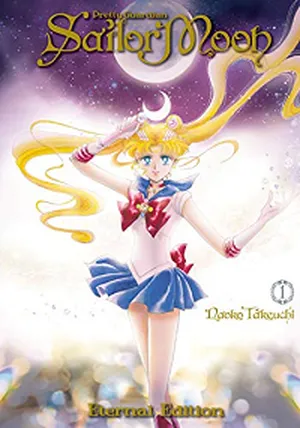
Pretty Guardian Sailor Moon by Naoko Takeuchi (1991-1997)
Sailor Moon isn’t the original magical-girl manga, but it may certainly be the most famous. Naoko Takeuchi’s 1990s space-fantasy series transformed the mahou shoujo genre forever by turning Usagi Tsukino and her friends into superheroes and emphasizing the importance of stereotypically “girly” interests, such as makeup, fashion, and all things cute.
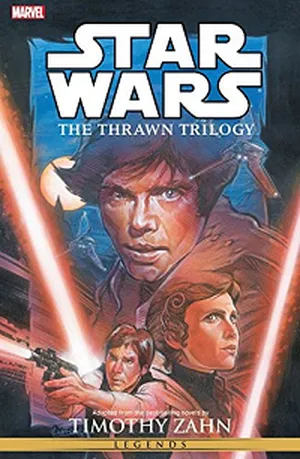
The Thrawn Trilogy by Timothy Zahn (1991-1993)
I know what you’re thinking. An IP series? On a list like this? Like it or not, Timothy Zahn’s Thrawn trilogy was the definitive continuation of the Skywalkers’ story for a generation of readers before the movie sequel trilogy. Although they’re no longer canon, Zahn’s Heir to Empire, Dark Force Rising, and The Last Command remain some of the greatest adventures ever written for sci-fi’s most recognizable heroes.
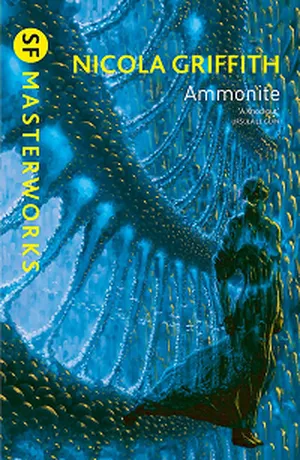
Ammonite by Nicola Griffith (1992)
A Lambda and Tiptree Award-winner, Nicola Griffith’s Ammonite follows an anthropologist to a colonized planet where a viral outbreak has killed many and changed the very makeup of the remaining survivors. Like Charlotte Perkins Gilman’s Herland, Ammonite devotes its time and attention to fleshing out what a world run by women would really look like — for better or for worse. It’s certainly not the first to cross this territory, but Griffith’s novel stands out as one of the finest examples of feminist science fiction ever written.
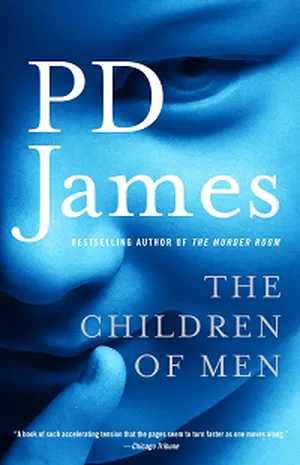
The Children of Men by PD James (1992)
Ranked as one of the BBC Arts “100 Novels That Shaped Our World” in 2019, PD James’s Children of Men imagines a near-future in which humanity’s inexplicable and near-total sterility has caused the breakdown of society around the globe. The novel’s post-pandemic setting — in this case, a flu pandemic in 2008 — and its depiction of a society willing to sacrifice its weakest members will ring true, and perhaps painfully so, for modern-day readers.
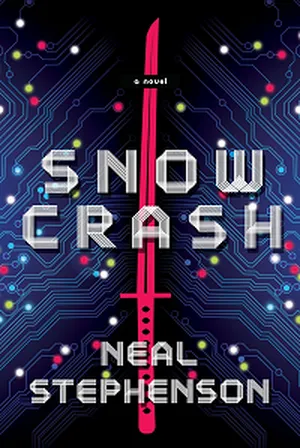
Snow Crash by Neal Stephenson (1992)
It’s not often you find a book that helped to shape the entire Internet, but here we are. Neal Stephenson’s Snow Crash predicted Google Earth, inspired Second Life, and popularized the term “avatar” for an online profile picture or character. Not too shabby for a tongue-in-cheek novel, wouldn’t you agree?
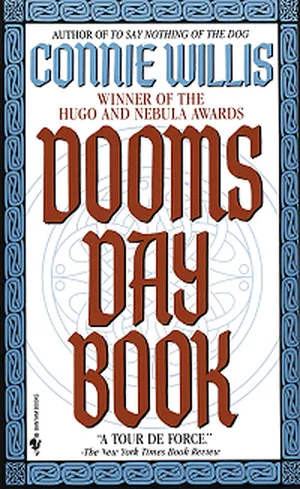
Doomsday Book by Connie Willis (1992)
A Hugo and Nebula winner, Connie Willis’s Doomsday Book follows a time-traveling historian to 14th century Oxford, where she becomes stranded in the midst of the Black Death, thanks to a global influenza outbreak spreading in her home time. A treat for all readers, Doomsday Book will particularly tickle fans of other stories about time-traveling academics, such as Jasper Fforde’s The Eyre Affair and Genevieve Cogman’s The Invisible Library.

Uzumaki by Junji Ito (1998-1999)
No one does horror manga like Junji Ito. Nowhere is the creator of Tomie and Remina better than in Uzumaki. Subtitled “Spiral into Horror,” this three-part manga series is a supernatural thrill-ride that effortlessly combines time travel with body horror. Although Ito’s influence is undoubtedly strongest within the horror genre, the weirdness of his work earns him a well-deserved place on this list.
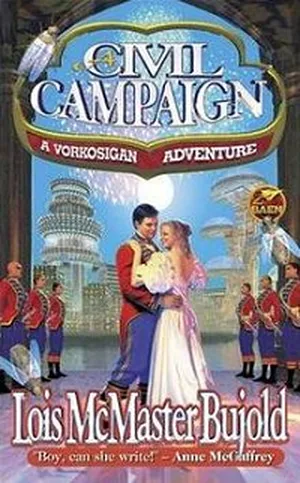
A Civil Campaign by Lois McMaster Bujold (1999)
These days, it’s not uncommon to find sci-fi and fantasy novels with significant romantic subplots, but Lois McMaster Bujold’s A Civil Campaign is in a league of its own. Blending together Regency romance, cozy mystery, and space opera, this entry in Bujold’s Vorkosigan Saga is an utter delight to read. Long before Pride and Prejudice and Zombies made mashup novels into dinner-table talk, A Civil Campaign had sci-fi fans swooning on the edges of their seats.
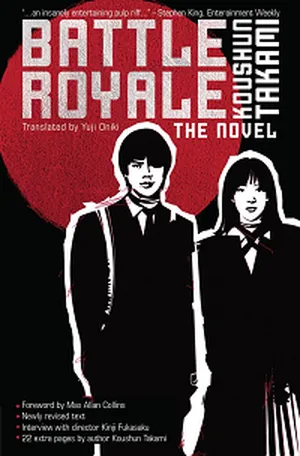
Battle Royale by Koushun Takami (1999)
Before Suzanne Collins’s The Hunger Games, there was Koushun Takami’s debut novel, Battle Royale. Much like Katniss and her fellow Tributes, Takami’s teenage protagonists are taken to a remote, televised location where they’re expected to fight each other to the death for their country’s entertainment. Although Collins has never claimed to have taken inspiration from Battle Royale, internet denizens have traced the lineage of popular video games, such as Fortnite and PlayerUnknown’s Battlegrounds, to Takami’s novel.
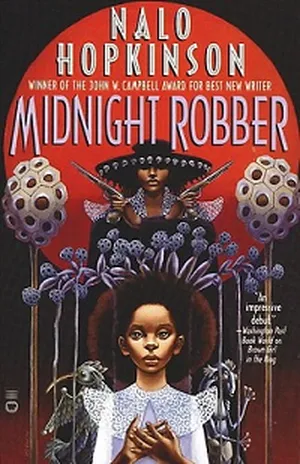
Midnight Robber by Nalo Hopkinson (2000)
In her sophomore novel, the follow-up to 1998’s Locus Award-winning Brown Girl in the Ring, Nalo Hopkinson imagines a corner of colonized space that’s heavily influenced by Afro-Caribbean tradition and folklore. In telling Tan-Tan’s coming-of-age story, Hopkinson treads into a number of heavy topics, including rape and incest. Midnight Robber received a starred review in Publishers Weekly and helped to cement Hopkinson as one of the most influential sci-fi writers of the 21st century.
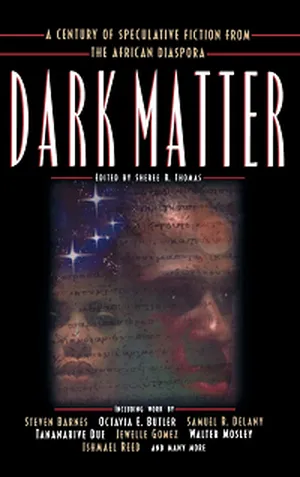
Dark Matter: A Century of Speculative Fiction from the African Diaspora, Edited by Sheree Renée Thomas (2000)
More than 100 years separate the first and third sci-fi novels on this list, due in no small part to the fact that, as Nisi Shawl — paraphrasing Jess Nevins — points out, “the race of the many anonymous authors published in the pulps in [the 1930s and 1940s] is unknown.” Dark Matter fills in some of that gap, collecting short fiction and essays from Shawl, Butler, Hopkinson, and Samuel R. Delany, as well as W.E.B. DuBois, Honorée Fanonne Jeffers, and Jewelle Gomez, among others.
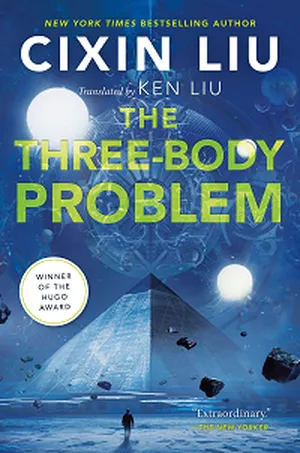
The Three-Body Problem by Cixin Liu (2008)
Cixin Liu’s Remembrance of Earth’s Past trilogy — The Three-Body Problem, The Dark Forest, and Death’s End — became many western readers’ first introduction to Chinese science fiction when Ken Liu’s English translation of the first installment appeared on store shelves in 2014. That translation took home the Hugo Award for Best Novel, becoming the first book by an Asian writer to do so, and opening the door for other sci-fi writers from the Chinese diaspora, including Hao Jingfang, S. Qiouyi Lu, and Xiran Jay Zhao.

Leviathan Wakes by James S. A. Corey (2011)
Long live the space opera! James S. A. Corey — AKA Daniel Abraham and Ty Franck — revived readers’ interests in epic space battles with their Expanse series, beginning with Leviathan Wakes in 2011. The ongoing story has inspired a television adaptation, comic-book miniseries, board game, and tabletop RPG, and it took home the Hugo Award for Best Series in 2020.
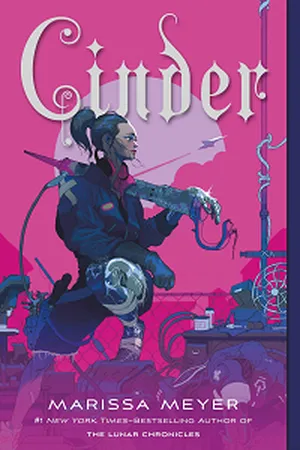
Cinder by Marissa Meyer (2012)
Sci-fi fairytales anyone? Marissa Meyer kicked off her Lunar Chronicles series with 2012’s Cinder: the story of a cyborg mechanic who may hold the key to saving an empire from a deadly plague. Much like A Wrinkle in Time, Cinder convinced a generation of girls and young women that there was a place for them in sci-fi.
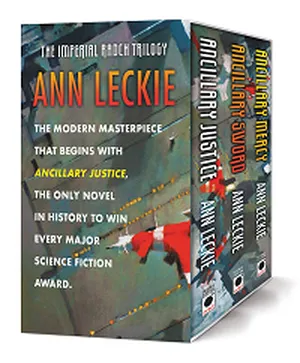
The Imperial Radch Trilogy by Ann Leckie (2013-2016)
The first novel to win the so-called triple crown of sci-fi awards — the Hugo, Nebula, and Arthur C. Clarke Awards — Ann Leckie’s 2013 debut, Ancillary Justice, launched a sweeping sci-fi epic that critiqued language, gender, and colonialism via a decades-in-the-making revenge plot.
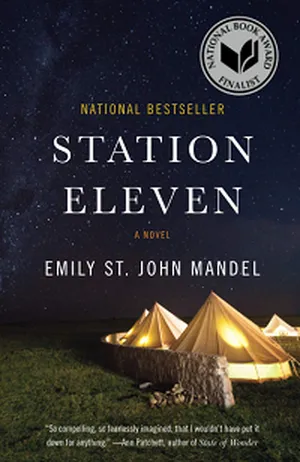
Station Eleven by Emily St. John Mandel (2014)
When we’re talking about recent, literary sci-fi novels, it doesn’t get much better than Emily St. John Mandel’s Arthur C. Clarke Award–winning Station Eleven. Set in the Great Lakes Region following a devastating plague that ended western civilization as we know it, Mandel’s breakout novel follows a Shakespearean acting troupe as they go toe-to-toe with a fanatical Prophet who runs a sex cult out of the small town he lords over.

Area X: The Southern Reach Trilogy by Jeff VanderMeer (2014)
The VanderMeers define the New Weird, and it doesn’t get much weirder than Jeff VanderMeer’s Southern Reach trilogy. Inspired by the St. Marks National Wildlife Refuge in Florida, the series has since inspired a conservation effort for the refuge, which sells authorized Area X merchandise.
The Shape Of Things To Come…
What will be the most influential sci-fi books for the next generation of authors? Here are a few predictions.
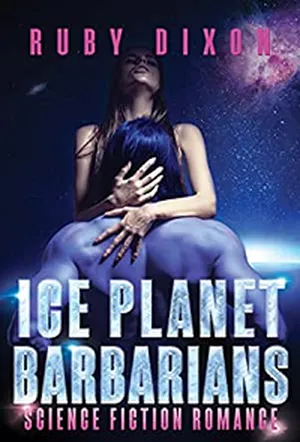
Ice Planet Barbarians by Ruby Dixon (2015)
Ruby Dixon’s erotic series centered on interspecies relationships between aliens and humans blew up on BookTok earlier this year, a surge in popularity that likely contributed to Berkley’s recent acquisition of the series. The monster romance trend that took off, as a relative novelty, with The Shape of Water in 2017 has resurged with Ice Planet Barbarians. It doesn’t take a psychic to see that alien-human romance novels are here to stay, now that Dixon’s getting major recognition.
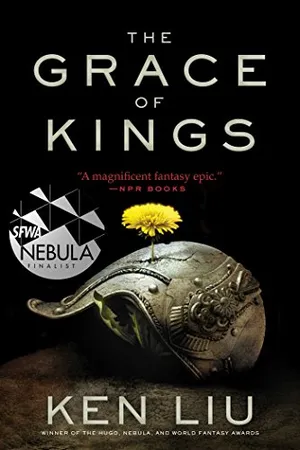
The Grace of Kings by Ken Liu (2015)
The novel that gave us the silkpunk genre, Ken Liu’s The Grace of Kings is a sweeping, science-fantasy epic of political intrigue, set in a high-fantasy world inspired by Chinese myth. In much the same way that The Three-Body Problem opened the door for Chinese science fiction, Liu’s Locus Award-winning trilogy-starter made space for genre-bending in East Asia–inspired English literature.
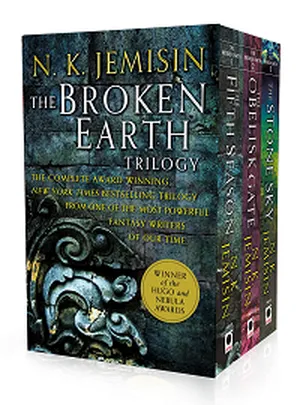
The Broken Earth Trilogy by N.K. Jemisin (2015-2017)
In 2016, N.K. Jemisin made history by being the first Black author to win the Hugo Award for Best Novel with the first installment of her Broken Earth trilogy, The Fifth Season. The next year, Jemisin landed another first with The Obelisk Gate, becoming the first author ever to win the Best Novel Hugo two years in a row. And in 2018, the celebrated author did what no one else had ever dreamed of, sweeping the Best Novel category a third consecutive time with The Stone Sky. The Broken Earth trilogy is history-making, and it deserves to be part of every conversation surrounding contemporary sci-fi.
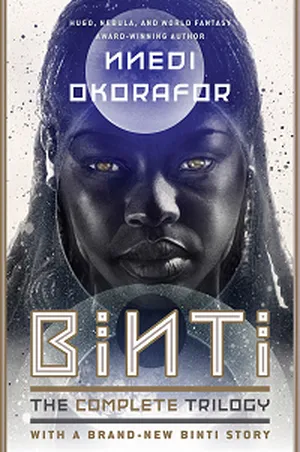
The Binti Trilogy by Nnedi Okorafor (2015-2018)
Nnedi Okorafor’s multi-award-nominated novella trilogy centers on Binti: a Himba girl who defies her parents and sets off on an intergalactic journey when she becomes the first of her people to be accepted at a prestigious, space-based university. Drawing from Lilith’s Brood, the Binti trilogy follows its young heroine as she bonds with the Meduse: a strange alien race intent on wiping out her university. Binti and its sequels ushered in what Tor.com dubbed “the new golden age of the SFF novella.”
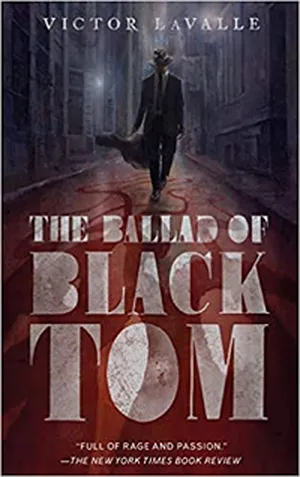
The Ballad of Black Tom by Victor LaValle (2016)
Like the novella, Lovecraft retellings have seen a resurgence in mainstream SFF, particularly those written by people the notoriously xenophobic author vilified in his own writings. One of the leading titles in that resurgence is Victor LaValle’s The Ballad of Black Tom, which revisits the events of H.P. Lovecraft’s “The Horror at Redhook” through the eyes of a Black musician hired to facilitate Robert Suydam’s deal with the devil.
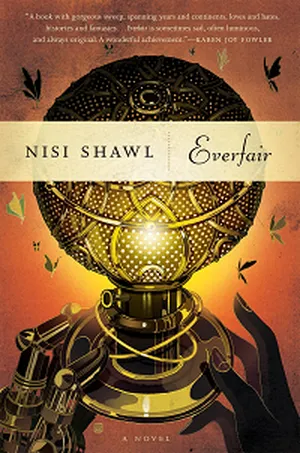
Everfair by Nisi Shawl (2016)
An alternate history of the Congo, Nisi Shawl’s Everfair offers a steampunk vision of central Africa, one that directly challenges western interpretations of Belgium’s colonization of what is now the Democratic Republic of the Congo. Shawl’s novel offers up a take on African-inspired SFF that’s become more popular in recent years, but still often smacks of novelty, thanks to the relative rareness of African settings in speculative fiction today.
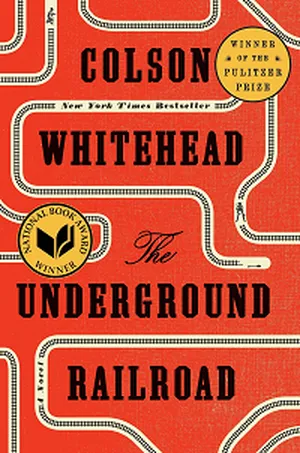
Underground Railroad by Colson Whitehead (2016)
The rare sci-fi writer whose work is enjoyed widely by both mainstream and literary fiction readers, Colson Whitehead has put out a number of celebration-worthy speculative novels, including the zombified Zone One and the deeply atmospheric The Intuitionist. But it’s his first Pulitzer Prize-winner, Underground Railroad, that earns a spot on this list for its role in renewing readers’ interest in alternate-history novels.

Future Home of the Living God by Louise Erdrich (2017)
The Round House author Louise Erdrich’s Future Home of the Living God combines the anxieties of The Handmaid’s Tale and Children of Men into a modern-day classic. Here, people have begun to give birth to lesser-evolved hominids, and an Ojibwe woman adopted by white parents must dodge dystopian forms of government interference when she finds herself pregnant with a Homo sapien. Erdrich’s novel is absolutely masterful, and a sign of what’s to come in pregnancy-anxious sci-fi.
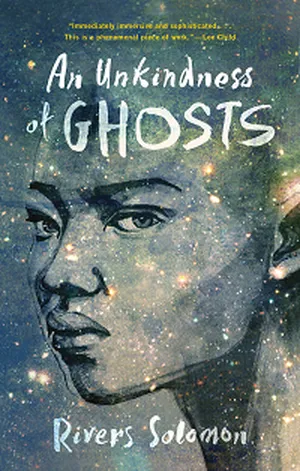
An Unkindness of Ghosts by Rivers Solomon (2017)
Have we talked about generation ships yet — those massive, slow-moving vessels whose crews birth and raise their successors? Generation ships have become a staple in contemporary sci-fi, and Rivers Solomon uses the trope to explore the last 200 years of real-life American race-relations in An Unkindness of Ghosts. Bearing some similarities to Snowpiercer, Unkindness follows Solomon’s heroine as she investigates the grim realities of her world.
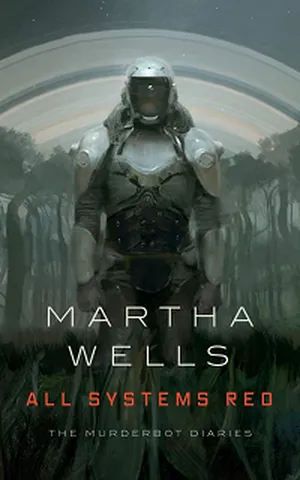
All Systems Red by Martha Wells (2017)
In today’s sci-fi landscape, nobody’s doing robots or speculative mysteries like Martha Wells. Wells’s Murderbot Diaries series follows the eponymous security robot — a self-aware unit who pretends to be like a normal, human-controlled android to avoid reprogramming — as its efforts to watch its favorite soap operas in peace are continually interrupted by murder mysteries only it can solve. When the next generation of robot novels hits, they’re sure to bear more similarities to Wells than Asimov.
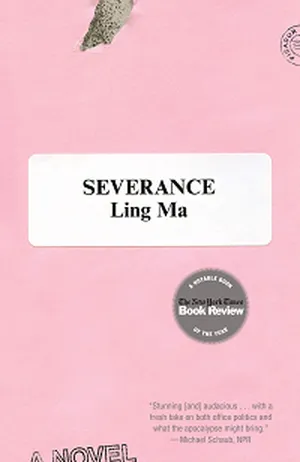
Severance by Ling Ma (2018)
Millennials have been publishing books for a while now, but all of our economic and existential angst is only just starting to appear in print. Chief among these examinations of our generation’s unique issues is Ling Ma’s Severance. A post-apocalyptic zombie novel that doubles as a send-up of millennial work culture, this Kirkus Prize-winning debut marks the beginning of millennial writers getting real about the things we — usually — only talk about in therapy.
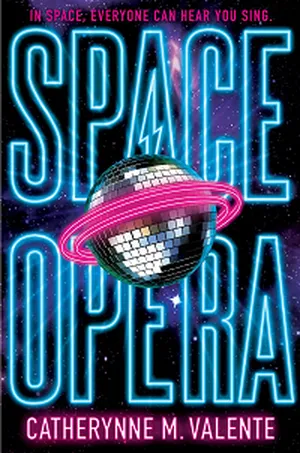
Space Opera by Catherynne M. Valente (2018)
SFF writer Catherynne M. Valente brings Douglas Adams’s humor into the modern day with this novel, which asks, “What if Earth competed in an intergalactic version of Eurovision?” Space Opera is funny. It’s imaginative. It’s hella queer. And it’s a sign of what’s to come in the sci-fi comedy niche.
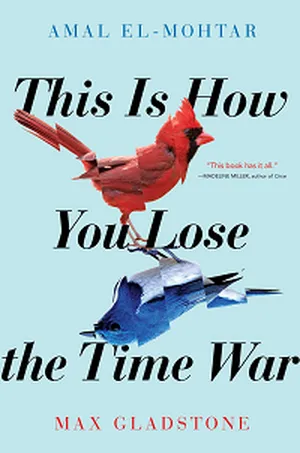
This Is How You Lose the Time War by Amal El-Mohtar and Max Gladstone (2019)
An epistolary love story about two time-traveling agents on opposite sides of a timeline-hopping battlefield? How could this not be one of the most influential sci-fi books for up-and-coming writers? In this novella — which won the British Science Fiction Association, Hugo, IGNYTE, Locus, and Nebula Awards — authors Amal El-Mohtar and Max Gladstone bring to the sci-fi genre all the charm and tenderness of a coffee-shop romance novel.
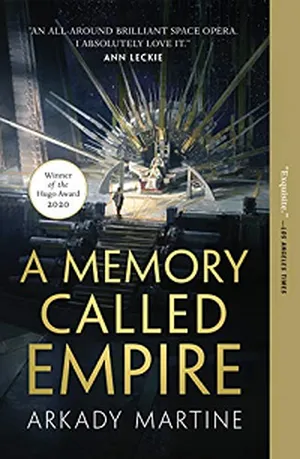
A Memory Called Empire by Arkady Martine (2019)
As a certified Dune stan, I’m always hesitant to compare novels to Herbert’s sci-fi epic, no matter how sweeping. With that being said, I’ve got no qualms whatsoever with saying that Arkady Martine’s A Memory Called Empire is as expansive, mysterious, and intricately webbed as Dune. This Hugo Award winner blends court intrigue, space opera, and murder mystery to create something completely fresh and totally exhilarating.
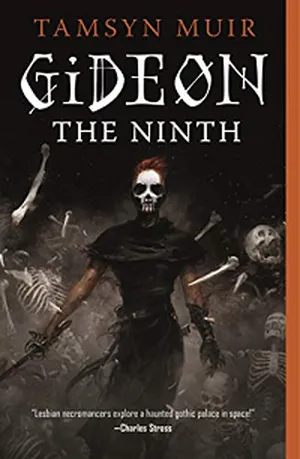
Gideon the Ninth by Tamsyn Muir (2019)
Speaking of murder mysteries, can we talk about Gideon the Ninth? The allure of Tamsyn Muir’s breakout success is relatively simple: You come for the lesbian necromancers in space, and you stay for the Agatha Christie-esque whodunit. And did I mention this novel is an unapologetic love letter to “trash lesbians” everywhere? Gideon is queering sci-fi the way Samantha Shannon’s The Priory of the Orange Tree is queering fantasy, and readers can’t get enough.
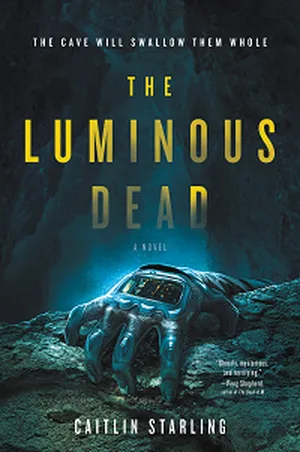
The Luminous Dead by Caitlin Starling (2019)
What happens if you mix Jeff VanderMeer’s Annihilation with The Descent? You get Caitlin Starling’s debut sci-fi horror novel, that’s what. The Luminous Dead is a horrifying vision of asteroid mining, one in which people take on cybernetic enhancements just to get a job that may very well kill them. It’s totally eerie, and, as one of the most popular sci-fi horror titles to come out in recent years, it’s sure to be a foundational text for new writers interested in the genre.

Finna by Nino Cipri (2020)
Horrorstör. The Very Nice Box. Finna. There’s something about IKEA that piques writers’ attention. Nino Cipri’s novella imagines an IKEA-like store that spontaneously connects to sister sites across parallel dimensions, with some catastrophic results. Whether it’s the queer, nonbinary romance at the heart of Finna, the dimension-hopping adventure, or the Swedish furniture, there’s something in Cipri’s book that grabs you like an interdimensional tentacle and never lets go.
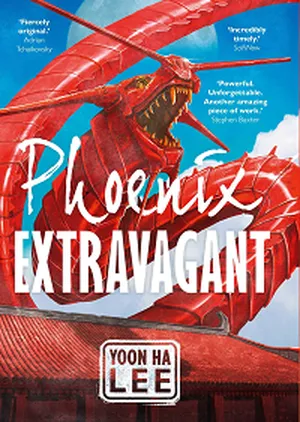
Phoenix Extravagant by Yoon Ha Lee (2020)
Given the way that publishing timelines work, it’s virtually impossible for Phoenix Extravagant to have influenced Zoe Hana Mikuta’s Gearbreakers or Xiran Jay Zhao’s Iron Widow. That doesn’t mean that Yoon Ha Lee’s 2020 novel won’t be the first in a mecha renaissance, however. Between those three books and the long-awaited arrival of Evangelion on Netflix? I’m calling it now.
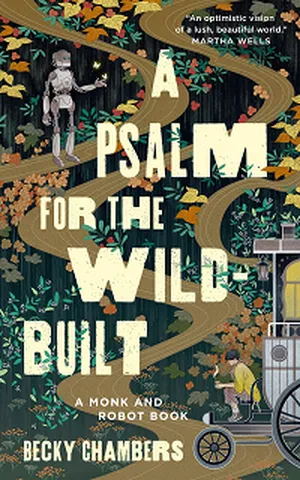
A Psalm for the Wild-Built by Becky Chambers (2021)
2020 was…a year. For many of us, 2021 hasn’t shaped up to be much better. That’s what makes A Psalm for the Wild-Built so important. Alexandra Rowland called this one “a soft hug of a book,” and I’ve never read a more accurate blurb. It’s all the feel-goods, all rolled into one, making it exactly what a lot of us need right now. It doesn’t take a rocket scientist — or a robot — to predict that there will be more like this one out soon.
Read Next: Must-Read Soft Science Fiction Books
Need more sci-fi in your life? Check out these feel-good science fiction books to pick you up when you’re feeling down.









